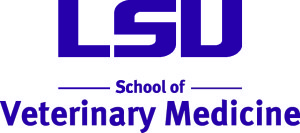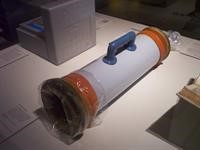| Written by Elise Madara, Class of 2014, LSU School of Veterinary Medicine Sara K. Lyle, Assistant Professor of Veterinary Medicine, Dept. of Veterinary Clinical Sciences, LSU, School of Veterinary Medicine Neely L. Heidorn, Assistant Professor of Animal Science, Dept. of Animal Science, LSU Ag Center
Original Publish Date December 2014 Contagious equine metritis (CEM) is an extremely contagious venereal disease caused by the bacteria Taylorella equigenitalis. Because it is a reportable disease, any cases of CEM must be reported to state and federal animal health authorities. So far, no research has shown T. equigenitalis infections to be zoonotic (transferrable from animals to humans). There are two main strains of the bacteria, a streptomycin resistant strain and a streptomycin sensitive one. In the past, it has been reported in many countries in Europe and also in Japan, so caution should be exercised when importing horses internationally for breeding purposes. The main effect of CEM is decreased reproductive efficiency. Initial exposure to the bacteria usually causes a failure by the mare to conceive due to endometritis (inflammation of the uterus), and may in some rare cases cause abortion. Transmission of the infection can be direct through genital contact or indirectly in the stallion’s semen during artificial insemination or through infected fomites (inanimate objects capable of hosting a virus; artificial vaginas, gloves, speculums, breeding dummies, wash buckets, etc…), so care should be taken to maintain sanitary conditions even if no known CEM positive horses are involved. The T. equigenitalis bacteria can reside in the internal reproductive tract of the mare, but the long-term site of infection is the clitoral fossa and sinuses. In the stallion, the bacteria can be found on the external genitalia. In the mare, infection by T. equigenitalis causes edema and hyperemia of the endometrium, endocervix, and the vaginal mucosa. It occurs in either the acute or chronic form, or as an asymptomatic (without symptoms) carrier state. Acute cases of CEM present with a thick milky mucoid discharge from the vulva due to uterine infection and inflammation. This discharge is evident 10-14 days after breeding. Chronic cases have less obvious signs of uterine inflammation and are usually more difficult to resolve. Carrier mares show no signs of the disease and can remain infected for several months after the initial infection occurs. Stallions show no clinical signs of infection and must be carefully tested before they are allowed to begin breeding. In the rare case that a mare does conceive when she becomes infected, the foal can also become infected at birth or shortly thereafter. Colts are more likely to contract CEM from a carrier mare at foaling due to their more exposed genitalia. The foal can then become a carrier of the disease. Diagnosis: (Pic 1) Contagious Equine Metritis (CEM) is an extremely contagious venereal disease caused by bacteria. Laboratory isolation of the bacteria is necessary for a case of CEM to be confirmed. Sample swabs from mares should be taken from the cervix, endometrium, clitoral fossa, and clitoral sinuses, preferably during estrus. Sample swabs from stallions should be taken from the penile sheath, fossa glandis, and urethral sinus; samples should also be taken from pre-ejaculatory and ejaculatory fluids if possible. Samples should be sent in Aimes transport medium with charcoal to an APHIS-approved laboratory under refrigeration within 24-48 hours of collection. There are also blood tests for mares to check for antibodies in mares with recent exposure, but antibodies do not develop in stallions. However, for a definitive positive diagnosis to be made, the bacteria must be isolated. The bacteria do not proliferate quickly so it may take as long as one week for results to be finalized. Treatment/Management: To resolve the infection, the mare must clear the bacteria from her uterus which may take weeks to months. The bacteria must also be eliminated from the clitoral fossa and sinuses. The procedure for cleaning the stallion and mare’s respective external genitalia is the same. The area must be disinfected with 2% chlorhexidine in a mild detergent solution, rinsed with warm salt solution, and then an antibiotic ointment such as nitrofurazone applied. In some cases, it may be necessary to remove the clitoris and clitoral sinuses where the bacteria may persist. Swabs should be taken ten days after treatment. For a stallion to be deemed clean, he must have 3 clean swabs on separate testing dates. Prognosis: While mares that have just been infected will likely not conceive, there have been no long-term reproductive effects reported in either mares or stallions. Subsequent infections are often less severe, however the horse will not develop complete immunity. There have been no fatal infections reported. If exposed, it is highly likely that the horse will become infected, making prevention of exposure the most effective means of controlling infection. Prevention: ( Pic 2) CEM can be transmitted through fomites (inanimate objects capable of hosting a virus; artificial vaginas, gloves, speculums, breeding dummies, wash buckets, etc.) Since there is no vaccine available, all imported mares, fillies, and stallions over two years old, all untested or unbred mares and stallions over two years old from the US, any horse suspected of having CEM, and the first three mares bred to a foreign stallion should be tested and quarantined until proved CEM negative. Any positive horse should be treated and not used for breeding until tested negative. Since the bacteria can be passed on fomites, strict personal hygiene should be observed when working with mares and stallions. Estimated Cost of Treatment: Because the best chance of detecting CEM is by sampling all of the sites listed above three times within a seven day period, the cost of testing is dependant on the veterinarian collecting the samples and laboratory fees. Laboratory fees for the cultures can vary between $100 and $200 per set of cultures. In the case that a horse is infected, there is a strict treatment plan from the USDA-APHIS which must be performed by a licensed veterinarian. Treatment cost will therefore also depend on your veterinarian. For more information, please visit the USDA-APHIS website at: http://www.aphis.usda.gov If you think your mare or stallion may have contracted CEM, thinking about importing horses from another country, or would like to have your animals tested please contact: Equine Health Studies Program School of Veterinary Medicine Louisiana State University Baton Rouge, LA 70803 Telephone: (225)-578-9500 Last Updated: 2/19/2014 |








